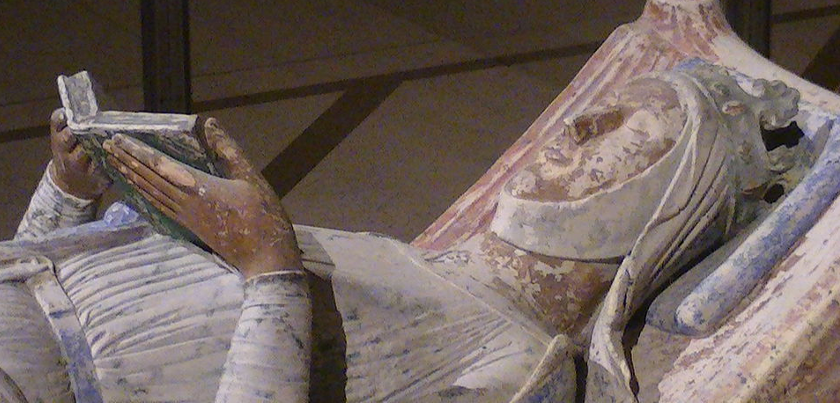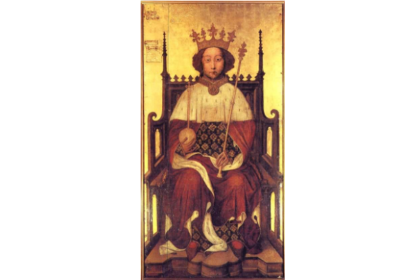Eleanor of Aquitaine, ca.1122-1204, is not only the most famous woman to have ever borne that name, but she is also very possibly the first as well, influencing the names of many generations of Eleanors after her.
Eleanor is the anglicised and modernised version of the name; she was actually called Alienor. She seems to have been name after her mother, Aenor. Aenor itself was a popular name in medieval France, and it comes from the latinisation of a Germanic name, Adenordis. The influence of this name can be seen in some of the early spellings of Eleanor’s name below. Although it is not certain, it has been theorised that the Latin term alia, meaning other, was combined with her mother’s name – alia + Aenor => Alienor. Whether this was the name she was christened with, or whether it was a nickname that stuck is unknowable.
There are records of earlier women named Eleanor, including our Eleanor’s own great-grandmother, who is often cited as Aleanor de Thouars, and Eleanor of Normandy, an aunt of William the Conqueror. However, the sources for all of these Eleanors all come from the 13th century onwards, after Eleanor of Aquitaine had popularised the name by becoming a legend in her own lifetime, and therefore, it is very possible that these women were named Aenor, or other variations, but later writers called them Eleanor in keeping with the fashion of their day. In the case of Eleanor’s great-grandmother, we do have evidence that the variations ‘Adenor’ and ‘Aenors’ were used by/for her.
Another thing to remember is that unlike today, there was no unified spelling convention, even for a person’s own name. Looking at letters written by (or rather, by clerks on behalf of) Eleanor throughout her lifetime, we can see a variation of spellings. Look at the first lines of some of Eleanor’s surviving letters. As they are not in English, I’ve fully capitalised her name to highlight it…some of the spellings will show why it isn’t always obvious at first glance.
1139: ‘In nomine sancte et individue Trinitatis. Amen. Ego HELIONORDIS, Dei gratia regina Francorum et ducissa Aquitanorum…’
1141: ‘In nomine sancte et individue Trinitatis, ego HELIENORDIS, Dei gratia humilis Francorum regina, et Aquitanorum ducissa.’
1152: ‘Quoniam hominum memoria cito labitur, ne ob hoc inter posteros altercacionis scrupulus oriatur, ego ALIENOR, Dei gracia ducissa Acquitanorum et Normannorum..’
1193: ‘…A. in ira Dei regina Anglorum, ducissa Normanniae et comitissa Andegaven..’
1199: ALIENOR, regina Angliae, ducissa Normanniae et Aquitaniae, comitissa Andegavensis…’
1200: ‘Karissimo filio suo, &c. Johanni Dei Gratia, ALIENORA, eadem Gratia, &c..’
1203: ‘Litterae ALIENORIS reginae Angliae, ducissae Normanniae et Aquitaniae, quibus Aimerico Rupisfortis…’
Letters sent to Eleanor also show different forms; in addition to ‘Alienor,’ several letters sent to her are addressed to ‘Alienorae,’ most notably by her own sons, Richard and John.
You will notice that these are all Latin letters, and the name has been latinised in some cases, particularly with ‘Alienorae.’ But ‘Alienor’ does seem to be the most consistent form, and the use of the first letter as ‘A’ is almost total.
Other famous Eleanors of medieval English history also used similar forms of the name. Unfortunately none of them were as politically involved as Eleanor of Aquitaine, so we have much less evidence of what forms of their names they used. Nevertheless, it is interesting to see the influence of this great woman in the naming of her descendents. Her daughter, named after herself, married into the Castilian royal family, becoming Leonor. This Leonor’s great-granddaughter and namesake went on to marry Edward I; born ‘Leonor,’ she became ‘Alienor’ or ‘Alianor’ upon her marriage. Eleanor of Aquitaine’s granddaughter via King John is addressed as ‘comitissae dominae A., comitissae Leycestriae’ in several letters written to her. And her grandson’s (Henry III) wife, Eleanor of Provence, seems to have used ‘Alienor’ herself when writing letters. The late 13th-early 14th century genealogical roll has both Edward I’s daughter and Edward II’s daughter, each called Eleanor, as ‘Alienor.’
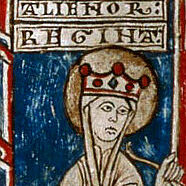
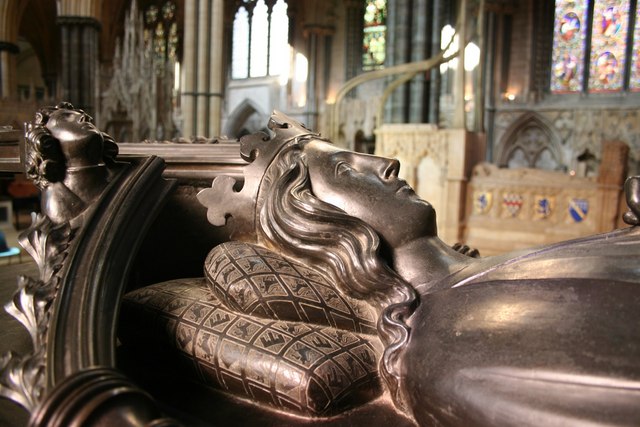
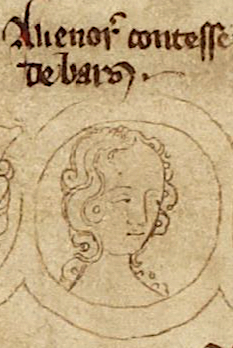
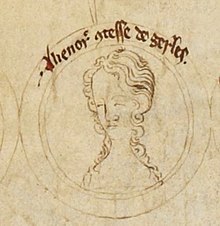
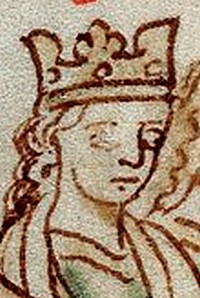
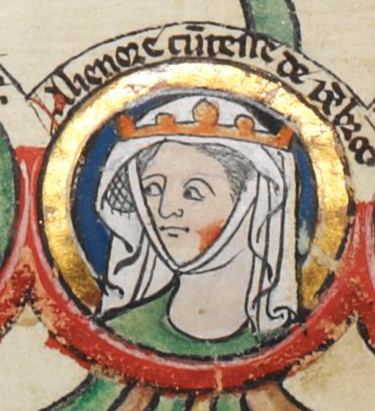
It isn’t easy to unpick this tangled web of Eleanors, but what does seem quite clear is that Eleanor of Aquitaine is the first certain use of the name, and definitely popularised it, to the extent that centuries later, it remains in the top 100 baby girl names in many English-speaking countries.

